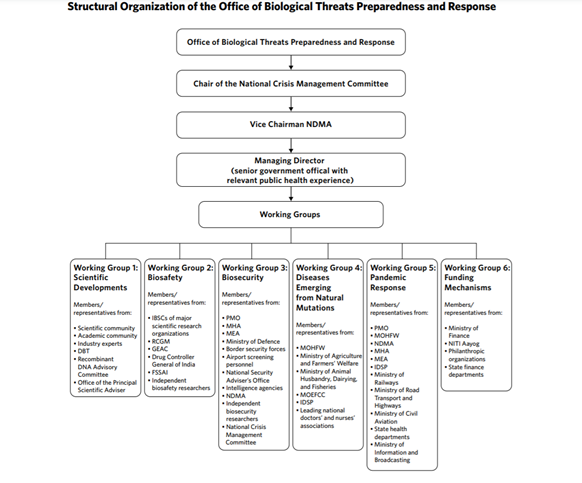[Thread] In a new working paper for @CEIPTechProgram, I trace India’s response to naturally occurring diseases and argue that India needs a full-time agency to deal with biological threats (1/12) https://carnegieendowment.org/2020/12/09/biological-risks-in-india-perspectives-and-analysis-pub-83399
India faces three major biological threats: naturally occurring diseases in humans, plants, or animals; infections arising from accidental release of pathogens in the environment; and possible outbreaks caused by deliberate weaponization of pathogens (2/12)
For 1st type of risk, rather than using the time between two outbreaks to develop national guidelines and standard operating protocols to tackle infectious diseases, India follows a reactive approach and convenes emergency committees once a disaster has occurred (3/12)
For 2nd type of risk, multiplicity of organizations under different ministries creates confusion and makes it difficult to implement biosafety guidelines. Moreover, the system often experiences poor coordination between center and state regulatory units (4/12)
For 3rd type of risk, India has no biosecurity policy but has multiple regulations that address various threats. These regulations however only cover export and import of pathogens but not commercially ordered DNA or RNA sequences that may encode virulent genes (5/12)
Recognizing these gaps, I strongly argue that India needs an agency for preventing and managing biological threats. This agency can be called the Office of Biological Threats Preparedness & Response (BTPR) and can be setup under the National Disaster Management Authority (6/12)
This office should focus on preventing and managing all three types of biological threats i.e., naturally occurring diseases, threats emerging from laboratory accidents, and deliberate weaponization of diseases (7/12)
Since India has numerous bodies that sometimes perform overlapping roles with limited or no coordination, BTPR office can be a nodal agency that brings together experts from different ministries, representatives from the private sector, academic, and scientific community (8/12)
The proposed Office of BTPR could have six working groups (WGs) with different roles and responsibilities. These working groups could draw members from existing relevant organizations or could create new posts on an as-needed basis (9/12)
These WGs, based on their performance, can also be institutionalized as permanent standing bodies that will help generate the political will needed to ensure smooth and efficient execution of strategies to contain biological threats both at the central and the state level (10/12)
The paper finally suggests that whether or not a new office is set up, it is important for India to review domestic measures needed to predict, prevent, and respond to both natural and man-made biological threats (11/12)
The pdf version of the paper can be found here (12/12)
https://carnegieendowment.org/files/Sharma_Biological_Risks_in_India.pdf
https://carnegieendowment.org/files/Sharma_Biological_Risks_in_India.pdf

 Read on Twitter
Read on Twitter


